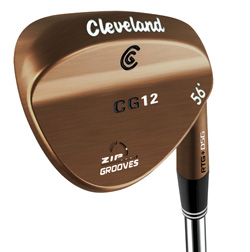 The Rules of Golf are about to change, setting new standards for the size and shape of grooves. What does that mean for the average golfer? Unless you’ve replaced your shortest irons in the last few months, chances are you’d be playing better, and shooting lower scores, with new wedges.
The Rules of Golf are about to change, setting new standards for the size and shape of grooves. What does that mean for the average golfer? Unless you’ve replaced your shortest irons in the last few months, chances are you’d be playing better, and shooting lower scores, with new wedges.
“The club companies won’t be able to make the old grooves after the end of this year,” reports Rob Passarelli, golf professional in the Golf Galaxy store in Christiana, Delaware. “But they are still selling them and unless you’re planning to qualify for the U.S. Open, you have until 2024 to play them. So I’m telling all my friends and students to get the most spin they can right now and buy wedges with the old grooves while they still can.”
Just as important as the grooves and the condition of your wedges is how many you have in your bag. Too many golfers rely on the manufacturer to dictate their wedge configuration, and that might not be the right set for you.
“It used to be that the typical set you bought went from 3-iron to pitching wedge,” says PGA teaching professional Mike Kohn in the Towson, Maryland, store. “Now it’s 4-iron to gap wedge, which is better because at least you’re starting with two wedges. But even that’s not enough.”
Look in the bags of the Tour professionals, men and women, and you’ll see that most of them are carrying four wedges. The pros know that their best scoring chances come within 100 yards of the green so they want as many clubs as possible to cover that crucial distance.
Just like the pros, you need to think of your wedges as a set within a set, with consistent gaps between the lofts and the distances they cover.
Rob Passarelli explains: “I like my players to have a 4- or 5-degree increment of loft between their wedges. So if they have a 48-degree pitching wedge, which is about standard, I usually recommend a 52-degree gap wedge, a 56-degree sand wedge, and if they can handle it a 60-degree lob wedge. That should cover everything they’ll encounter, but I actually know a guy who carries five wedges!”
Knowing how many wedges you need isn’t enough. You also need to think about your swing and the course conditions you regularly play:
–Are the fairways firm or lush?
–What are the bunkers like?
–Do you play a lot of different courses so you need clubs that can adapt to different situations?
–How much bounce do you need on the sole of your wedges?
–Are you comfortable hitting half and three-quarter shots?
Discuss the answers to these questions with your local pro, who can help you choose the wedges that match up best with where you play and how you play.
Also consider the appearance of wedges, many of which come in a choice of finishes. The different looks aren’t only cosmetics. A darker finish reduces glare, which can be a big factor on a sunny day and when you open the clubface to increase loft. There are also matte finishes, black satin, and copper. While the finish won’t affect performance, if you don’t like the way your wedges look and feel you’re probably not going to hit good shots no matter how much technology is in there.
An edited version of this article originally appeared in “Tee Time,” published by Golf Galaxy.
